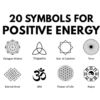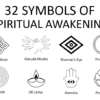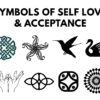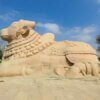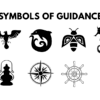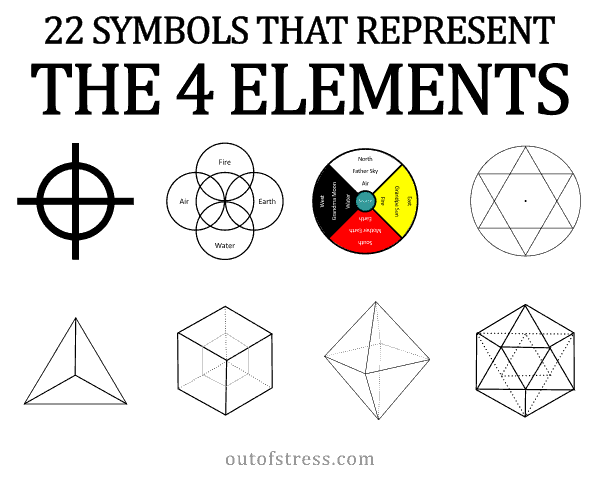
The universe and all it encompasses arise from the interplay of four elements: Fire, Air, Water, and Earth. The fifth element, Spirit (or Ether) is an unifying element present within all four elements.
For instance: we consume water, breathe air, and eat food (derived from Earth) to live. The Fire element, representing heat, drives the vital chemical reactions within us. Thus, our bodies embody all four elements, mirroring the universe itself.
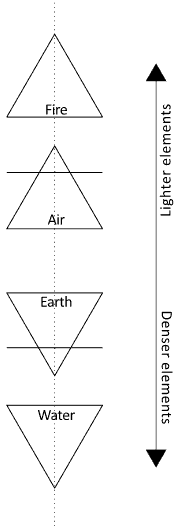
Here’s a brief look at what each of these elements symbolize:
- Fire: Fire is symbolized by an upward-facing triangle (since Fire always points toward the sky). It stands for transformation, renewal, and rebirth and is the lightest of the four elements.
- Air: The Air element is represented by an upward-facing triangle with a horizontal line through its center. It embodies intellect, ideas, and communication.
- Water: Water signifies emotion, intuition, and the subconscious. It is represented by a downward-facing triangle.
- Earth: Symbolized by a downward-facing triangle with a horizontal line through its center, Earth represents stability, groundedness, and physicality.
- Spirit: Infused within the other four, the Spirit element is the glue binding them together. It symbolizes the universe’s unifying force and is closely tied to consciousness, spirituality, and the cosmos.
Out of these four elements, Fire and Air are masculine elements, and always rise upwards towards the sky. In contrast, Earth and Water are denser and feminine, and naturally gravitate downwards.
Intriguingly, all these elements are interconnected and can transition into one another. For instance, by applying Fire to Water (heating it), it becomes steam—an Air element. Nature showcases this: ocean water, heated by the sun, evaporates, rises, cools to form clouds, and then descends as rain, sustaining Earth’s vital water cycle.
Since these elements are fundamental to your being, understanding how they work and maintaining their balance is the secret to optimal health and a fulfilling life.
Symbols offer a profound way to comprehend the deeper significance embedded within these elements. In this article, let’s take a look at 20 powerful symbols that represent the four elements and their deeper symbolism.
22 Symbols that Represent the 4 Elements
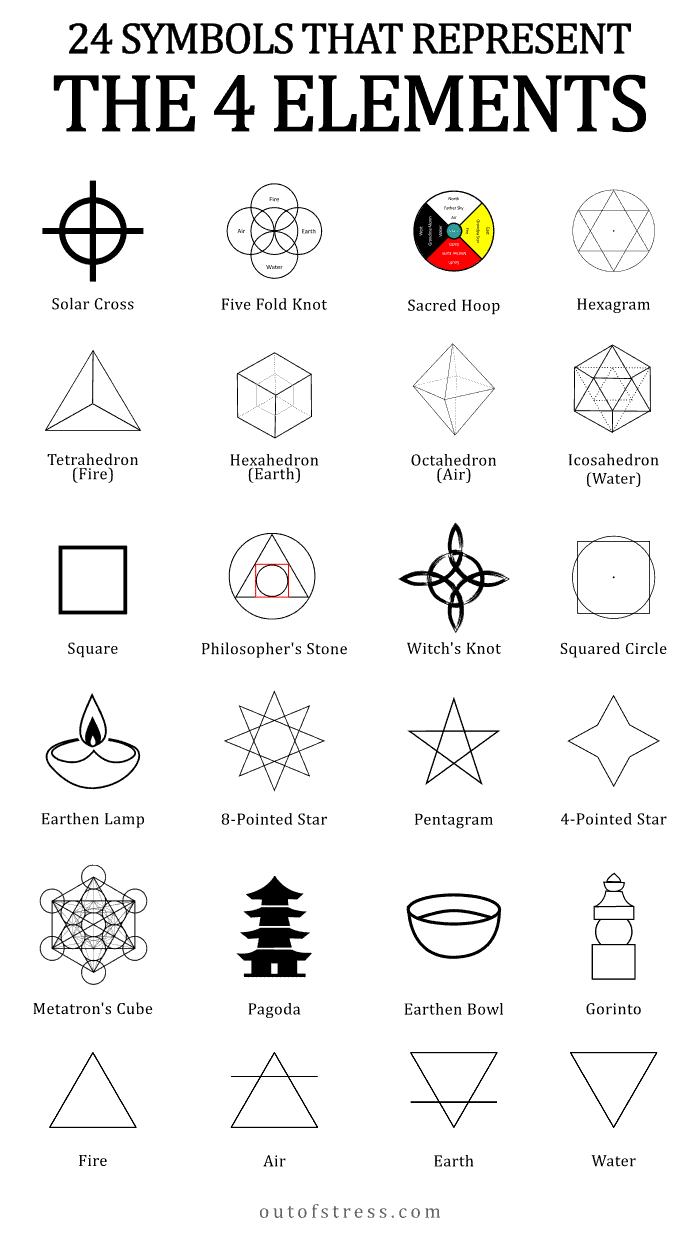
1. Four-Pointed Star
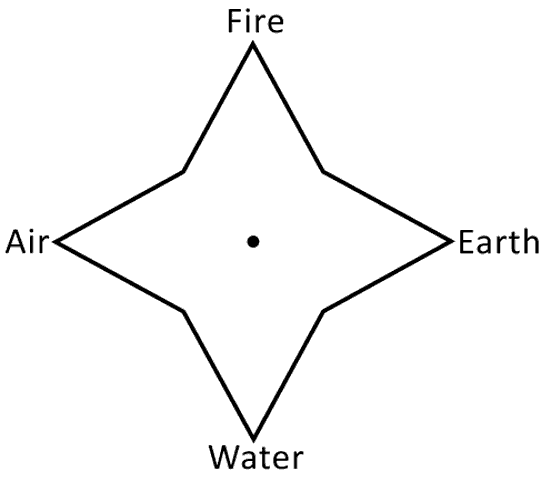
The four points of the 4 pointed star represent the 4 elements. The center of the star represents the 5th element which is the spirit or ether that is present in all 4 elements.
2. Five-Pointed Star
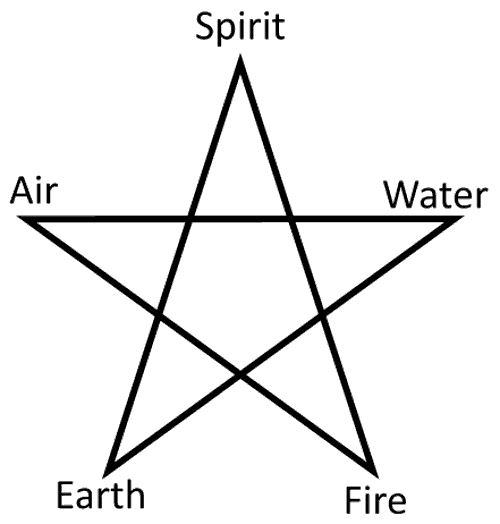
The Five-Pointed Star (also known as the Pentagram) represents all the basic elements.
The topmost point of the star represents the element of Spirit and the other four points represent the four elements. This configuration suggests that the four physical elements are governed by the Spirit, symbolizing the principle of ‘Mind Over Matter’ or the supremacy of the spiritual realm over the physical world.
Sometimes the Five-Pointed Star is shown within a circle (known as the Pentacle) which represents the universe or eternal cycle of existence.
3. Six-Pointed Star
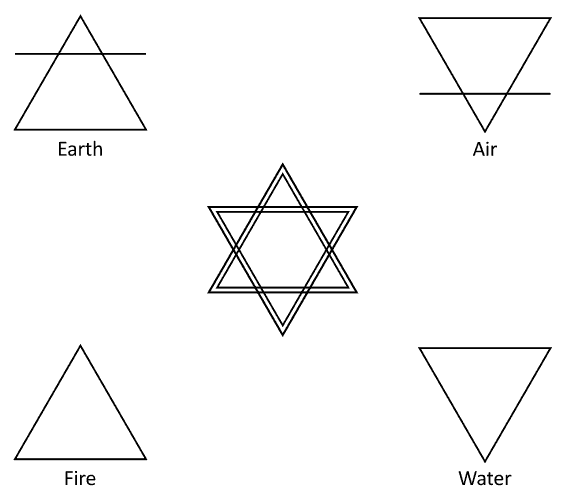
Of the 4 elements, the elements of Air and Fire are masculine in nature. Fire is represented by an upward-pointing triangle and Air by an Upward Pointed Triangle with a horizontal line at the top. Similarly, Water and Earth are feminine in nature and hence represented by the downward pointed triangle and downward pointed triangle with a line respectively.
When we combine these triangles, we get the Hexagram or the Six-Pointed Star.
Hence the six-pointed star represents the balance, unity, and interconnectedness between the four elements. This balance is the crux of all existence. It also suggests that the 4 elements are held together by spirit or source energy.
4. Squared Circle Symbol
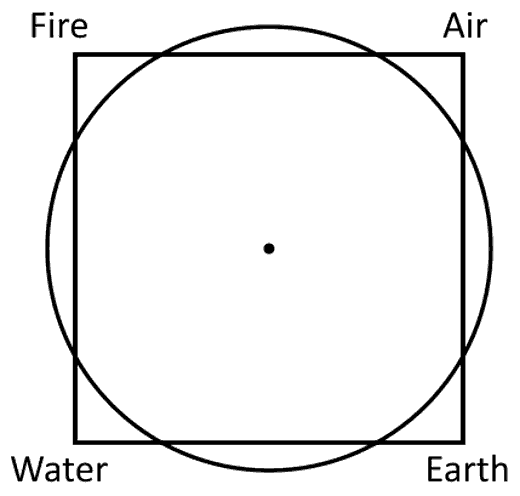
A squared circle (as shown in the image above) is created by overlapping a square and circle of equal area. The Square, distinguished by its four equal sides and angles, symbolizes the material world and the four elements, whereas the Circle that has no beginning or end represents the Spirit or spiritual world. Thus the Squared Circle represents the union of the material and spiritual world that is the basis of all creation.
5. The Celtic Cross
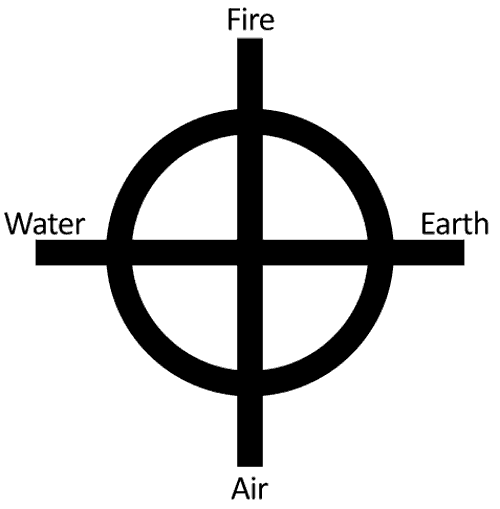
The Celtic Cross features a circle encompassing two intersecting (vertical and horizontal) lines.
The vertical line symbolizes the masculine elements of Fire and Air, while the horizontal line represents the feminine elements of Water and Earth. The points where these lines intersect signifies spirit or the source of all creation. This symbol shows how these four elements must coexist for sustaining life.
The circle around the lines symbolizes the eternal and cyclic nature of existence.
6. Clay Pot
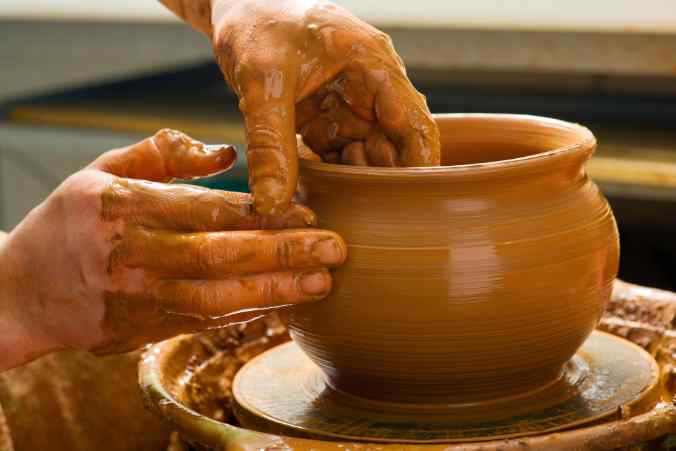
A clay pot beautifully represents the four elements. Clay represents the Earth element. Water is used to shape and mold the clay into its final shape. Air aids in drying the shaped clay, and fire hardens it into a stone-like form. Additionally, the space within the pot represents the fifth element. Thus, a clay pot is a perfect confluence of the five basic elements.
7. A Lit Candle

A lit candle beautifully captures the essence of the 4 elements. The wick and the candle’s body symbolize the earth element, providing stability and anchoring the flame. The wax, which transitions from solid to liquid and then to gas when in contact with the flame, mirrors the transformative nature of the water element. The air element keeps the flame alive but it also has the power to extinguish it. The candle’s flame epitomizes the fire element, representing passion, willpower, rebirth, and the vigor of life.
The burning of the candle releases light and heat, drawing upon the properties of the wax and the air around it.
8. A Lit Earthen Lamp
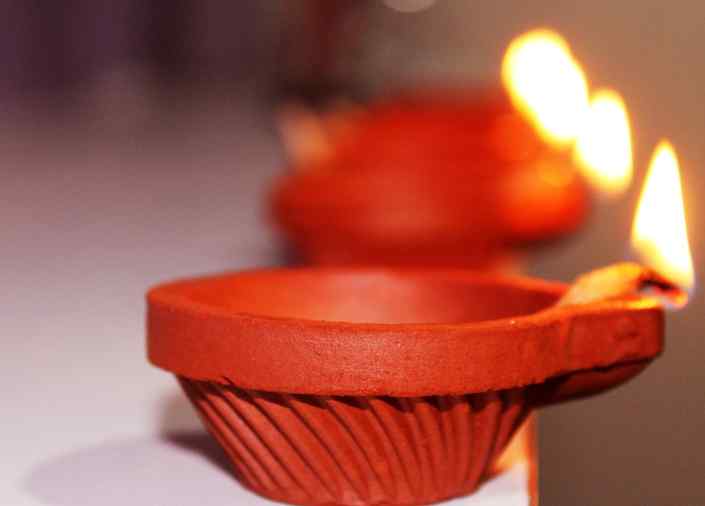
In Hindusm and Buddhism, an Earthen Lamp is used to symbolize the 4 elements. The wick and body of the lamp which is made out of clay represents the Earth element. The oil which is used as the fuel represents the Water element. The flame represents Fire and it draws from the air for sustenance.
In Hindu tradition, earthen lamps are lit during all significant festivals and in temples, serving as a reminder of the four elements.
9. Five Fingers
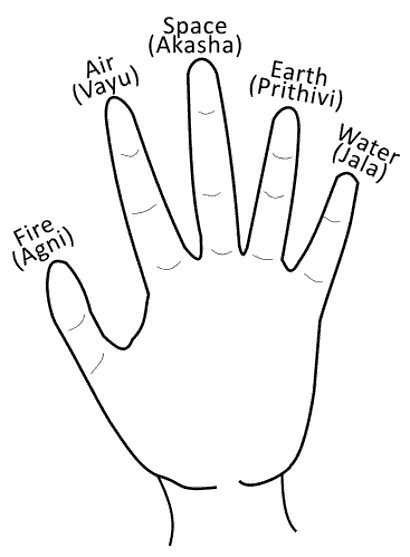
Since ancient times the five fingers have been used to symbolize the five elements. Here’s what each finger generally represents:
- Thumb – Fire (Agni)
- Index – Air (Vayu)
- Middle – Space (Akash)
- Right – Earth (Prithvi)
- Little – Water (Jal)
The Mudras or hand gestures is a system in Hinduism based on this principle. For instance, in Gyana Mudra the tip of the thumb touches the tip of the index finger representing the merging of fire and air. Air helps the fire burn brighter and accordingly this mudra is associated with a brighter mind and higher thoughts.
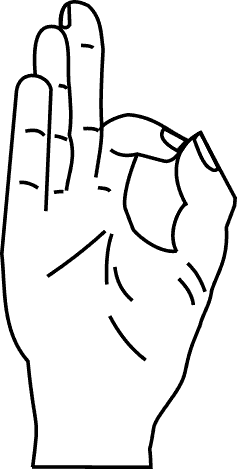
Another example is the Surya (or Sun) Mudra where you bend your ring finger (earth element) and place your thumb (fire element) on top of it. This gesture symbolizes the dominance of fire over the earth. Practicing this mudra is believed to boost internal warmth, promote weight loss, and enhance metabolism.
10. Dai-dōrō (Japanese Lantern)
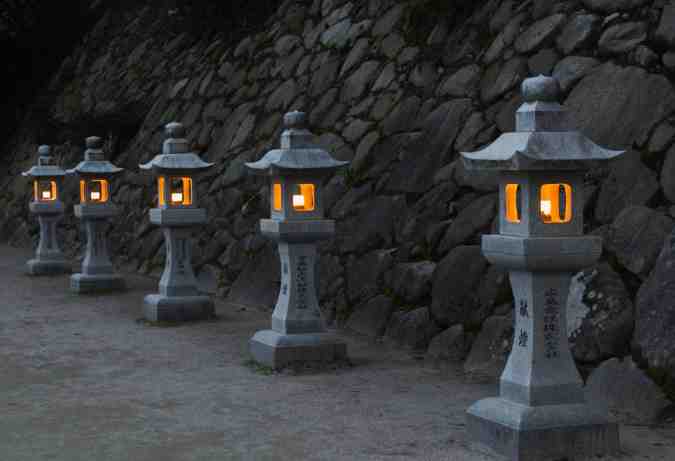
The Dai-doro is a traditional Chinese stone lantern used in Buddhist temples and Shinto Shrines. It has five sections that represent the 5 elements (4 elements + the spirit element).
The bottom piece of the lantern that touches the ground represents the earth element. The next section that contains the fuel (in liquid form) represents the water element. The third section that encases the lantern’s flame represents the fire element. The air element is represented by the semi-circular disc whereas the top section that looks like a dome and points toward the sky represents void or spirit.
11. Celtic Five Fold Symbol
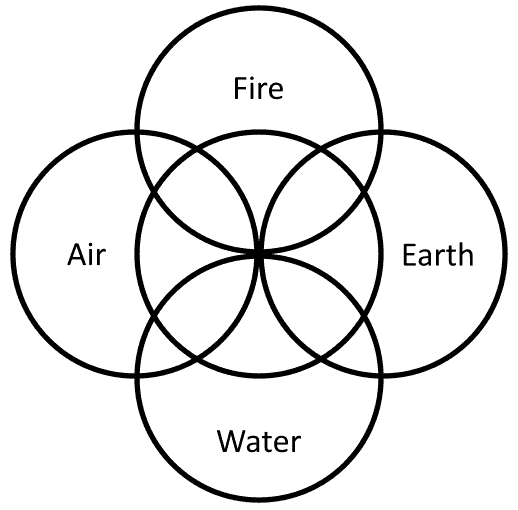
The Celtic five-fold symbol is an age-old design featuring four overlapping circles with a central fifth circle intersecting each of them. These four outer circles signify the 4 basic elements, while the central circle represents the ethereal fifth element, or spirit, that intertwines and binds all elements together.
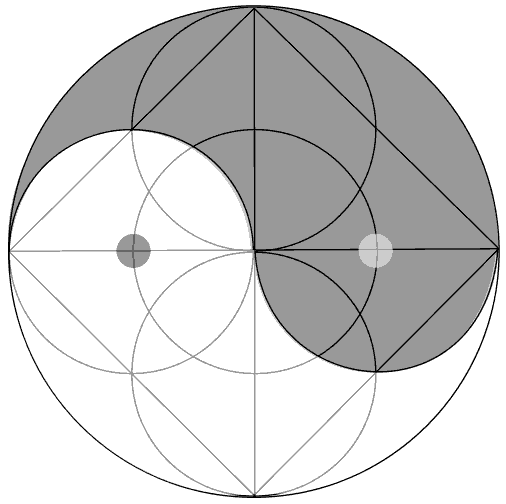
As you can see from the above image, the five-fold symbol incorporates the Yin-Yang, representing the balance and harmony between opposing forces foundational to all life in the universe.
12. The Japanese Five-Storied Pagoda (Gojunoto)
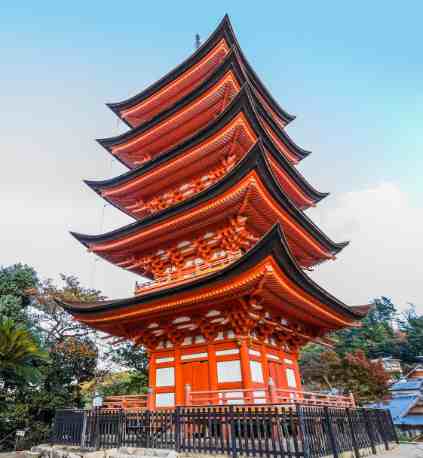
Gojunoto is a traditional Japanese temple that is constructed using 5 roofs. Each of these roofs represents the 4 elements with the topmost roof representing the 5th element of ether or spirit.
- Earth: The first roof represents the physical world and our connection to it and thus is related to the Earth element.
- Water: The second roof symbolizes the Water element and the fluid, ever-changing nature of life.
- Fire: The third roof denotes both destruction and renewal. Fire, in various cultures, is seen as purifying as much as it devastates.
- Air: Ascending to the fourth level, it represents the intangibles – our thoughts and unseen influences shaping our lives.
- Void or Ether: At the pinnacle, the fifth level encapsulates the Buddhist understanding of the void or ether, suggesting enlightenment and the transcendence of material desires.
There are a total of 11 Gojunoto temples in Japan with the oldest one dating back to the year 607. These temples were built using remarkable craftsmanship and are designed to withstand earthquakes and other natural calamities.
13. Native American Medicine Wheel (Sacred Hoop)
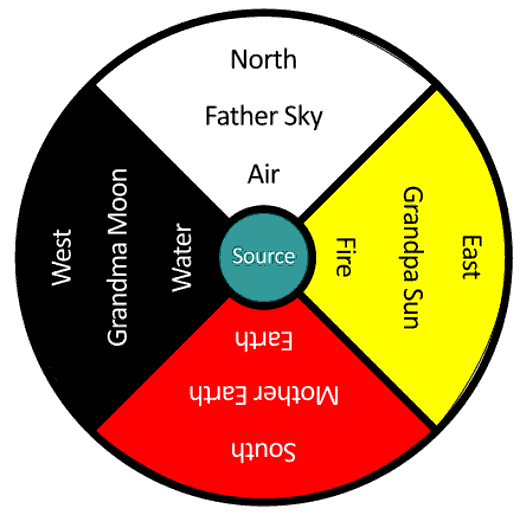
The Medicine Wheel, also known as the Sacred Hoop, is an age-old Native American symbol related to healing and shamanism. It features a circle bisected by both vertical and horizontal lines, creating four distinct quadrants. Each of these quadrants represents one of the four elements.
- Earth, aligned with the North, symbolizes our physical existence and our bond with all life.
- Water, pointing to the West, represents our ever-changing emotions and intuition.
- Air, tied to the East, stands for our thoughts, communication, and the wisdom we share.
- Fire, associated with the South, represents the spirit, passion, and our inner light.
This ancient symbol serves as a reminder of the intricate balance and interconnectedness of these elements in our relationship with ourselves and the broader universe.
14. 11:11
The number 11:11 symbolizes the two feminine elements (Earth and Water) and the two masculine elements (Air and Fire). When you see this number it signifies the manifestation of your deepest desires, facilitated by the harmonious combination of these four elements. Additionally, it conveys a message of spiritual guidance, affirming that you’re on the right path and should persist in your current direction.
15. Seed Sprouting
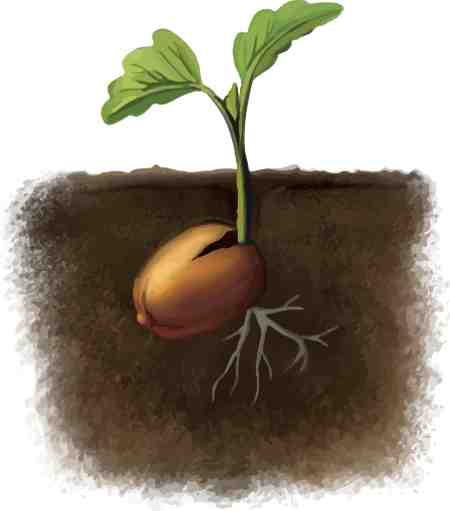
When you plant a seed beneath the soil, it starts to germinate using the earth and water elements, both of which are feminine principles. Upon sprouting, the plant harnesses the energy of the air and fire (represented by sunlight) — the two masculine elements.
Thus a seed sprouting out of the soil symbolizes the unity of the four elements present within the plant. What gives it life is the fifth element of ether/spirit which is present within all four elements.
16. Gorinto (Japanese Pagoda)
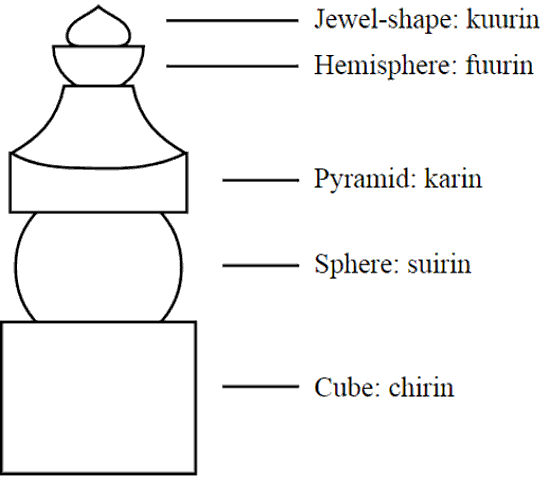
The Gorinto, also known as the Five-Ringed Tower, is a Japanese Style Pagoda embodying the five elements: earth, water, fire, air, and spirit. This unique structure consists of five distinct sections, each representing an element:
- The base of the Gorinto is a Cube, symbolizing the Earth element.
- Resting above the cube is a Sphere, which represents the Water element.
- Above the sphere, a Pyramid shape embodies the Fire element.
- A Hemisphere is placed atop the pyramid, representing the Air element.
- At the pinnacle is a Jewel-shaped form, symbolizing the Spirit element.
This hierarchical configuration of forms and elements reflects the interconnectedness and interdependence of the elements within the universe.
17. Five Platonic Solids
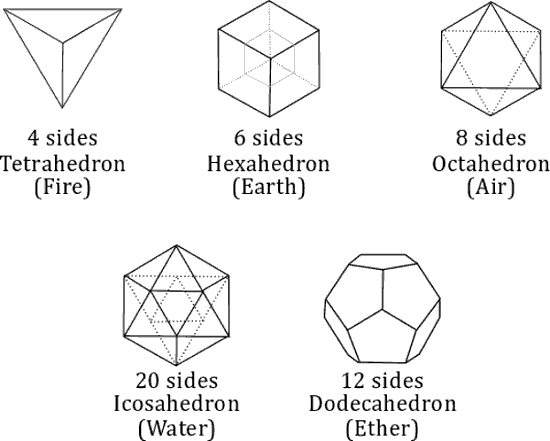
The five platonic solids are sacred geometrical forms that are believed to be the building blocks of the universe. These shapes are found in mineral structures, organic life forms, sound waves, and even musical patterns. One unique feature about these solids is that all of their faces are of identical length, breadth, size, and shape. Moreover, their vertices fit perfectly within a sphere.
These shapes include the Tetrahedron, Hexahedron, Octahedron, Icosahedron, and Dodecahedron. Each of which represents one of the five elements. They are as follows:
- Tetrahedron (Fire): This shape is composed of 4 equilateral triangles. It points upwards and is associated with the element of fire due to its fiery, rising nature. This shape also has the least number of sides as compared to the other solids which matches with fire as fire is the least dense of all the elements.
- Hexahedron (Earth): Also known as a cube, this shape has 6 square faces. This solid sits flat, firmly rooted in its position, which makes it a suitable representation of the earth element.
- Octahedron (Air): This shape is made up of 8 equilateral triangles. It can be seen as two pyramids base-to-base and is often linked with the element of air, symbolizing the connection between the spiritual (sky) and the material (earth).
- Icosahedron (Water): This shape comprises 20 equilateral triangles. The flow-like nature of its structure makes it the perfect representation of the water element.
- Dodecahedron (Ether/Spirit): This shape contains 12 pentagonal faces and represents the cosmos or the universe itself. It’s often linked with the fifth element, ether or spirit.
The platonic solids are also found within the Metatron’s Cube (another sacred geometrical form) which we will discuss next.
18. Metatron’s Cube
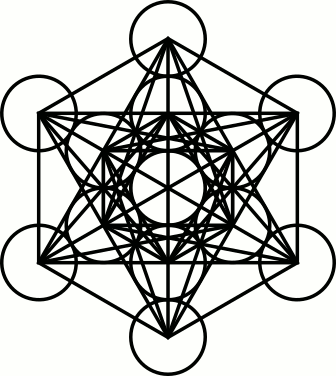
Metatron’s Cube is a powerful sacred geometry symbol that has its roots in the Seed of Life. As we add more circles to the Seed of Life, we get the Flower of Life. As we continue to add more circles to the Flower of Life, we get the Fruit of Life. The Fruit of Life consists entirely of circles – 12 circles plus one circle in the center and represents feminine energy. When we connect the centers of each one of these circles using straight lines to the other circles, we get the Metatron’s Cube. The straight lines represent masculine energy.
Hence, the Metatron’s Cube represents the union of Feminine and Masculine energies which is the basis of creation. It also represents unity, harmony, and balance. It is interesting that all five platonic solids (discussed earlier) can be found within the Metatron’s Cube as shown in the image below.
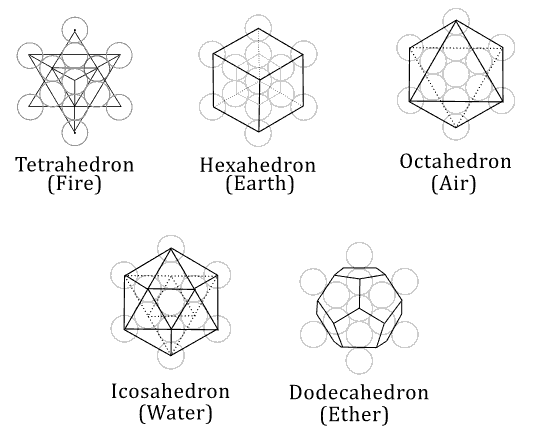
Thus the Metatron’s Cube, represents the fundamental patterns and elements of everything in existence.
19. Octahedron
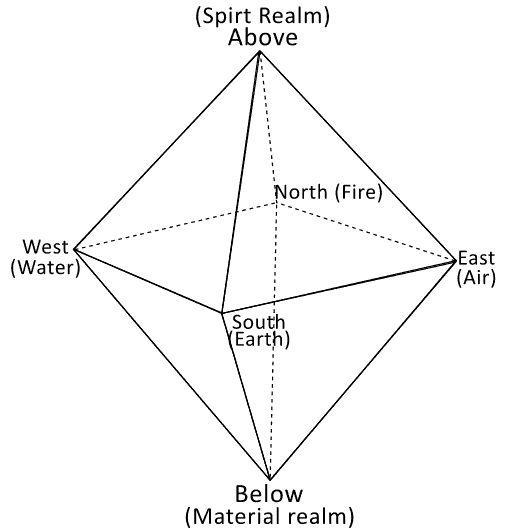
The Octahedron, a platonic solid as previously discussed, is created by merging two square-based pyramids. Each pyramid comprises 4 triangular faces and a square base. Therefore, the Octahedron features 8 triangular faces and a square where they meet.
This square signifies the four directions and their corresponding elements, while the upper and lower points of the pyramids denote the Above and Below directions. Above is linked with the Spiritual realm, while the point below is connected to the Material realm. The center of the Octahedron symbolizes the source energy, representing the fifth element.
20. Eight-Pointed Star
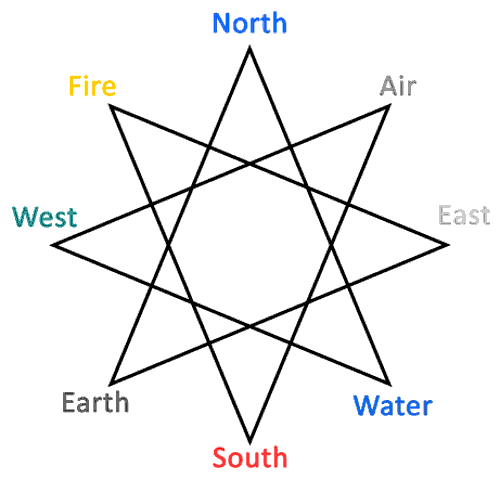
The four vertices of the Eight-Pointed Star represent the four sacred directions (North, West, East, South) and the remaining four vertices represent the 4 elements. In fact, the 4 elements are associated with the 4 directions as we saw before.
Fire represents the North direction, water is associated with the West direction, air symbolizes the East direction and Earth corresponds to the South direction.
21. 12-Pointed Star
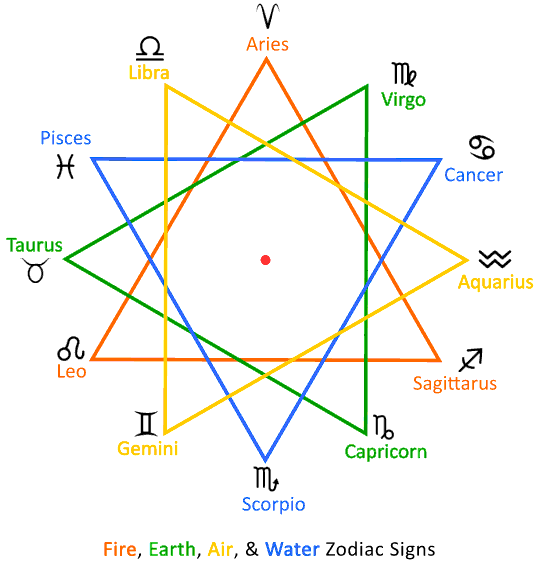
The 12 Zodiac signs, based on the 12 constellations that the Sun appears to pass through in a year, are generally categorized into four groups, each associated with one of the four elements. These divisions are as follows:
- Fire Signs: Aries, Leo, Sagittarius
- Earth Signs: Taurus, Virgo, Capricorn
- Air Signs: Gemini, Libra, Aquarius
- Water Signs: Cancer, Scorpio, Pisces
This allocation of signs based on the elements can be effectively depicted using the 12-pointed star, as shown in the image above. Therefore, the 12-pointed star symbolizes the four elements.
22. Lord Vishnu & the 4 Elements
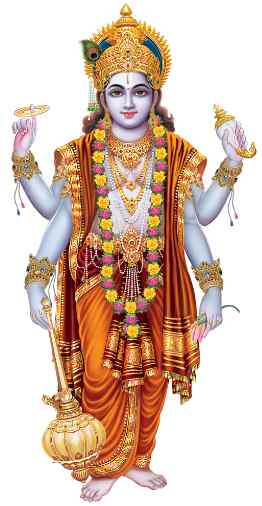
In Hinduism, Vishnu is one of the three primary deities associated with creation. He is the God of sustenance, ensuring the preservation of what has been created. He is said to be present in every single atom and every particle in the universe. Vishnu is often depicted with a conch, disc, flower, and a gada (golden mace) each symbolizing one of the four elements.
Specifically, the Sudarshan chakra (disc) represents fire, the conch stands for water, the flower signifies air, and the gada epitomizes earth.
Vishnu’s blue-colored appearance further symbolizes the Space (or Akasha) element (which is the fifth element).
Conclusion
In conclusion, the four elements are more than archaic concepts; they are essential components that hold the very secrets of existence. Understanding these elements and mastering their balance within ourselves is the pathway to healing and optimizing our lives. Symbols can greatly aid in this endeavor.
If any symbol from this list resonates with you, contemplate incorporating it into your life as a reminder of these elements and their presence within you. Meditate on the symbol to delve further into its meaning and symbolism.


